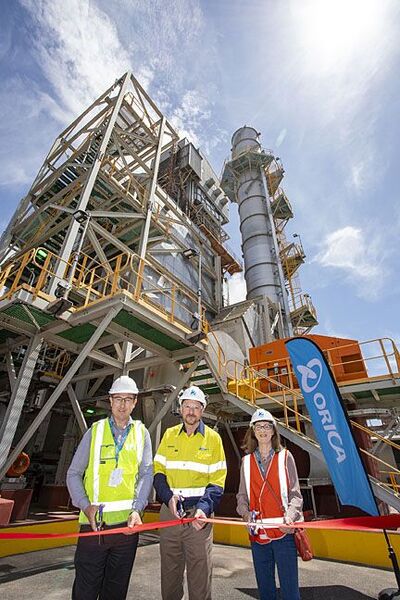This post was originally published on Sustainability Matters

Orica has announced the completion of an environmental improvement project to reduce emissions of ammonium nitrate (AN) particulate from its Kooragang Island manufacturing site in the Hunter Valley.
The project has involved retrofitting the prill tower1 with an irrigated fibre-bed scrubber2 to capture particles of AN produced during the manufacturing process.
The abatement technology is designed to reduce AN particulate emissions, including fine particles with a diameter of 2.5 µm or less, by approximately 95%. The captured emissions are then recirculated in the manufacturing process to produce critical products for the resources and medical industries across Australia.
Orica President – Australia Pacific and Sustainability Germán Morales said the project is designed to ensure the sustainability of the Kooragang Island site.
“We understand and share the community’s desire for better air quality in general, and we are proud to play a role in achieving this,” Morales said.
“From start to finish, we have worked closely with the NSW Environment Protection Authority to ensure the project meets regulatory expectations and delivers optimal outcomes for the community and the environment.”
Designing, fabricating and installing the scrubber was a multi-year, large-scale and complex engineering project, with the construction phase alone taking more than 18 months or 115,000 work hours to complete.
“Retrofitting the scrubber to an existing and operating prill tower which stands at around 52 metres high has been technically challenging,” Morales said.
“Completing this project is a great achievement for the site and a real testament to the expertise of our people.”
1. The prill tower is where liquid ammonium nitrate is turned into small, solid ammonium nitrate balls (prill).
2. An irrigated fibre-bed scrubber is designed to clean the contaminants out of a gas stream. The first stage removes large particles via woven stainless steel mesh pads. The second stage removes fine particles via what are known as Brink filters. These filters are woven tubes that accumulate and coalesce the finer particulates into solution for collection in a sump at the bottom of the scrubber.





0 Comments